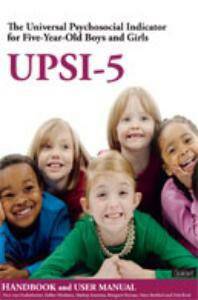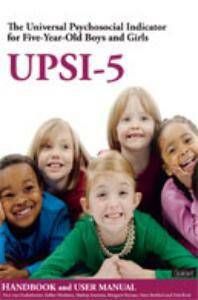
- Afhalen na 1 uur in een winkel met voorraad
- Gratis thuislevering in België vanaf € 30
- Ruim aanbod met 7 miljoen producten
- Afhalen na 1 uur in een winkel met voorraad
- Gratis thuislevering in België vanaf € 30
- Ruim aanbod met 7 miljoen producten
Zoeken
Universal Psychsocial Indicator for Five-Year-Old Boys and Girls (UPSI-5). Handbook and User Manuel
Handbook and User Manuel
Nico van Oudenhoven, Esther Miedema, Mathijs Euwema, Margaret Kernan, Hans Berkhof, Dirk Knol
Boek | Engels
€ 13,00
+ 26 punten
Omschrijving
Indicators used in the international development debate on children's wellbeing typically use 'rough-and-ready' measurements such as Infant Mortality Rate (IMR) and Under-Five Mortality rate (U5MR) for their physical health, and notions such as 'Height-for-Age' and 'Weight-for-Height' for their nutritional status. Indicators that give an impression of the psychosocial wellbeing of young boys and girls are usually lacking. Sometimes, data about school attendance or drop out are presented to this end. But they tell more about the quality of the educational system in a particular location than about the children. The result is that policies and programmes give only piecemeal attention to the psychosocial comfort and security of children, if at all.
The UPSI-5 provides an urgently needed counterpart to the strictly physical indicators and mortality indicators commonly used to measure young children's wellbeing and survival. It is an easy to use global screening device that can assess the psychosocial wellbeing of large populations of 5-year-children. ICDI designed it to serve three main purposes:
• To get a more holistic insight into the well-being of young girls and boys in any given population;
• To track changes over time, and to make comparisons between child populations;
• To give more prominence to the psychosocial needs and requirements of young children in policy making and programming.
UPSI-5 is primarily meant for governmental, non-governmental and UN agencies concerned about the well-being and development of young children, who work with large numbers of them and would benefit from obtaining overall impressions about their psychosocial status. The UPSI-5 is not an instrument to be used for individual diagnostic purposes. It should, therefore, only be interpreted as a first indication that further professional attention may need to be sought.
This book consists of two parts. Part One makes a plea to take more seriously children's mental and emotional status, and the ways in which they relate to other children, their families, caregivers, communities and their broader environment. It also presents the rationale for introducing the UPSI-5 in programmes and policies benefiting children. Part Two explains in detail how to make best use of the UPSI-5.
The UPSI-5 provides an urgently needed counterpart to the strictly physical indicators and mortality indicators commonly used to measure young children's wellbeing and survival. It is an easy to use global screening device that can assess the psychosocial wellbeing of large populations of 5-year-children. ICDI designed it to serve three main purposes:
• To get a more holistic insight into the well-being of young girls and boys in any given population;
• To track changes over time, and to make comparisons between child populations;
• To give more prominence to the psychosocial needs and requirements of young children in policy making and programming.
UPSI-5 is primarily meant for governmental, non-governmental and UN agencies concerned about the well-being and development of young children, who work with large numbers of them and would benefit from obtaining overall impressions about their psychosocial status. The UPSI-5 is not an instrument to be used for individual diagnostic purposes. It should, therefore, only be interpreted as a first indication that further professional attention may need to be sought.
This book consists of two parts. Part One makes a plea to take more seriously children's mental and emotional status, and the ways in which they relate to other children, their families, caregivers, communities and their broader environment. It also presents the rationale for introducing the UPSI-5 in programmes and policies benefiting children. Part Two explains in detail how to make best use of the UPSI-5.
Specificaties
Betrokkenen
- Auteur(s):
- Uitgeverij:
Inhoud
- Aantal bladzijden:
- 81
- Taal:
- Engels
Eigenschappen
- Productcode (EAN):
- 9789044129274
- Verschijningsdatum:
- 2/05/2012
- Uitvoering:
- Boek
- Afmetingen:
- 240

Alleen bij Standaard Boekhandel
+ 26 punten op je klantenkaart van Standaard Boekhandel
Beoordelingen
We publiceren alleen reviews die voldoen aan de voorwaarden voor reviews. Bekijk onze voorwaarden voor reviews.











